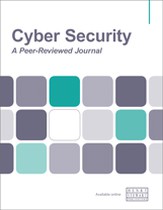AI detection of malicious push notifications in augmented reality in the workplace
Abstract
Distraction caused by the visual processing of multiple objects during augmented reality (AR) immersion could make users more susceptible to malicious push notifications, thus potentially exposing organisations to unwitting insider threats. This case study consulted four experts in the field of AR application development to design a proposed artificial intelligence (AI) equipped feature that could detect possibly malicious artefacts entering the user’s line of sight during partial immersion in an augmented reality application at the workplace. Participants included a business partner at an AR company, a security engineering manager, an AI engineer focused on machine learning (ML) and a data analytics specialist. The case study determined that a security application natively implemented into the device could use heuristic analysis of user screen captured activity to assess potentially malicious push notifications in real time.
The full article is available to subscribers to the journal.
Author's Biography
Sarah Katz is a Cybersecurity Technical Writer at Microsoft and PhD candidate in cyberpsychology at Capitol Technology University. She holds a Bachelor’s degree in international security from the University of California, Berkeley, and a Master’s degree in counterterrorism. Her nine years of experience include cyber security analysis at NASA alongside the introductory cyber security book Digital Earth: Cyber Threats, Privacy, and Ethics in an Age of Paranoia, published by IT Governance Publishing. Sarah has had the privilege of articles published in Cyber Defense Magazine, Dark Reading, Infosecurity Magazine and ISACA Journal, including an appearance on their 2023 podcast to discuss doctoral research surrounding the threat of distraction during augmented reality immersion.
